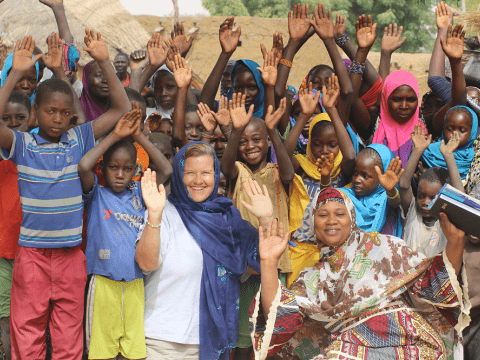CRC@25: 5 things you should know about children’s right to health

The Convention on the Rights of the Child guarantees every child’s right to health. But what does that mean in practice? It has too often been misunderstood as an unattainable commitment by governments to keep all their nation’s children healthy. In 2013, the United Nations Committee on the Rights of the Child (CRC Committee) took a major step towards addressing this misunderstanding when it published a General Comment on what a child’s right to health looks like.
As we celebrate the 25th anniversary of the Convention on the Rights of the Child it is timely to highlight the main points of this General Comment:
1. The life cycle approach
Understanding our life cycle is essential for addressing health problems in childhood, which is a period of continuous growth from birth to infancy, through the preschool age to adolescence. Each phase is significant and has an impact on subsequent stages - with important developmental changes occuring in terms of physical, psychological, emotional and social development, expectations and norms. The stages of the child’s development are cumulative and each stage has an impact on subsequent phases, influencing children’s health.
2. What is the child’s right to health?
It is an inclusive right to timely and appropriate prevention, health promotion, curative, rehabilitative and palliative services. Governments need to show a commitment to progressively put these services in place and, irrespective of resources, have the obligation not to take any retrogressive steps that could hamper the enjoyment of children’s right to health.
3. The obligation to diminish child mortality
Under the obligation to reduce child mortality, governments must strengthen health systems to provide the required interventions in the continuum of care for maternal, newborn and children’s health, including safe delivery services and care for the newborn. Particular emphasis should be put on scaling up simple, safe and inexpensive interventions that have proven to be effective, such as community-based interventions.
4. The double burden of malnutrition
Children around the world are facing a double burden of malnutrition - both undernutrition and overweight. Since under nutrition still accounts for a great deal of deaths in children under five, interventions to improve the nutritional status of pregnant women and malnourished children must be undertaken. Given its importance for human development, adequate nutrition in early childhood should also be treated as an absolute priority. To address child obesity, governments should work to limit children’s exposure to “fast foods” and drinks that are high in fat, sugar or salt, energy-dense and micronutrient-poor.
5. The Action Cycle to improve children’s health
Countries need to engage in a cyclical process of planning, implementation, monitoring and evaluation to then inform further planning, modified implementation and renewed monitoring and evaluation efforts. This requires appropriately disaggregated data across the life course of the child, with due attention to vulnerable groups. Children must be given the space to actively participate in the whole Action Cycle according to their age and maturity.
Next steps
Together with our partners, we are now working on the implementation of these recommendations. So far, we have developed a child-friendly version of the General Comment, which not only explains the document but also helps children build their own advocacy strategies to push for the issues that they identify as priorities in their context. We are looking forward to working with children and all our partners to give life to the General Comment’s recommendations.
Discover World Vision's CRC@25 blog series.
About the author
Thiago Luchesi is Advisor for Child Health Policy and Rights at World Vision International.